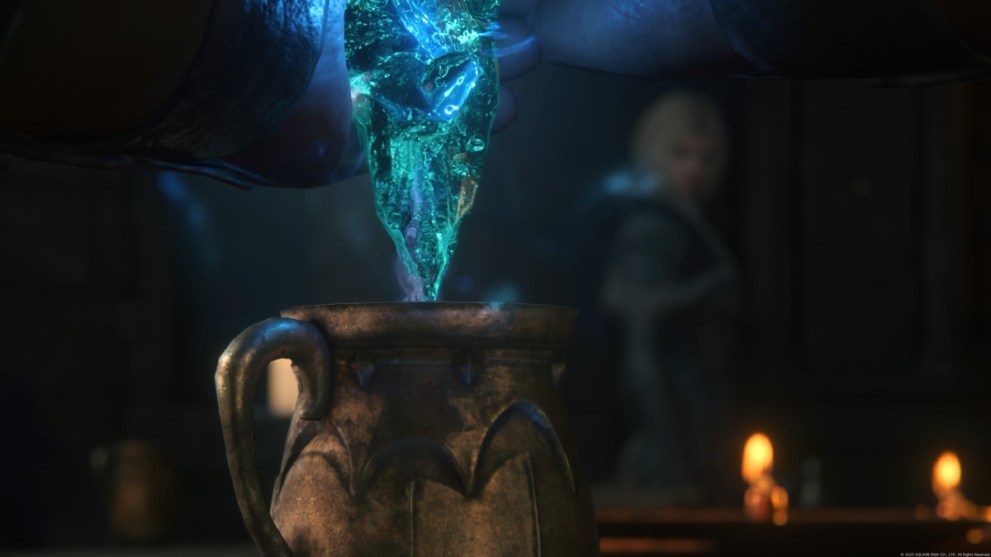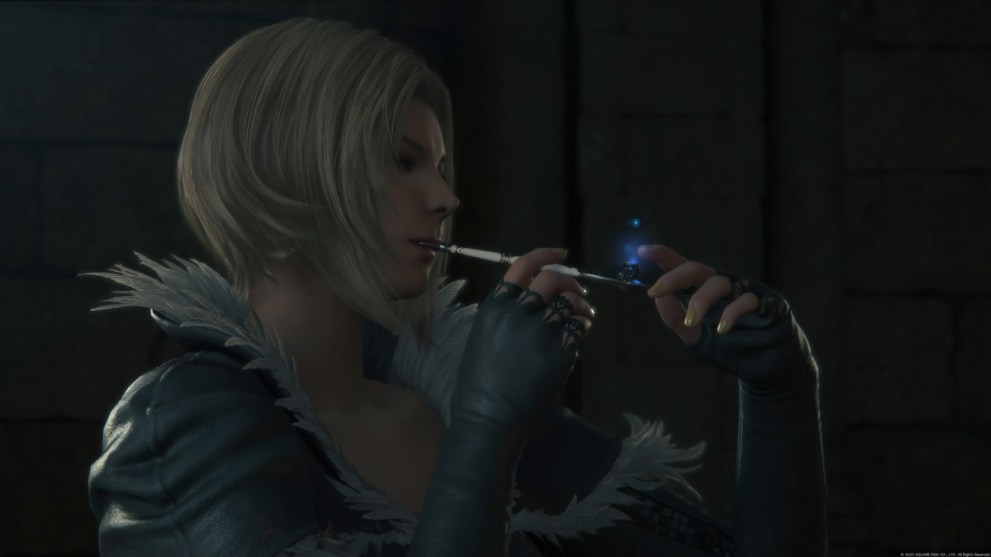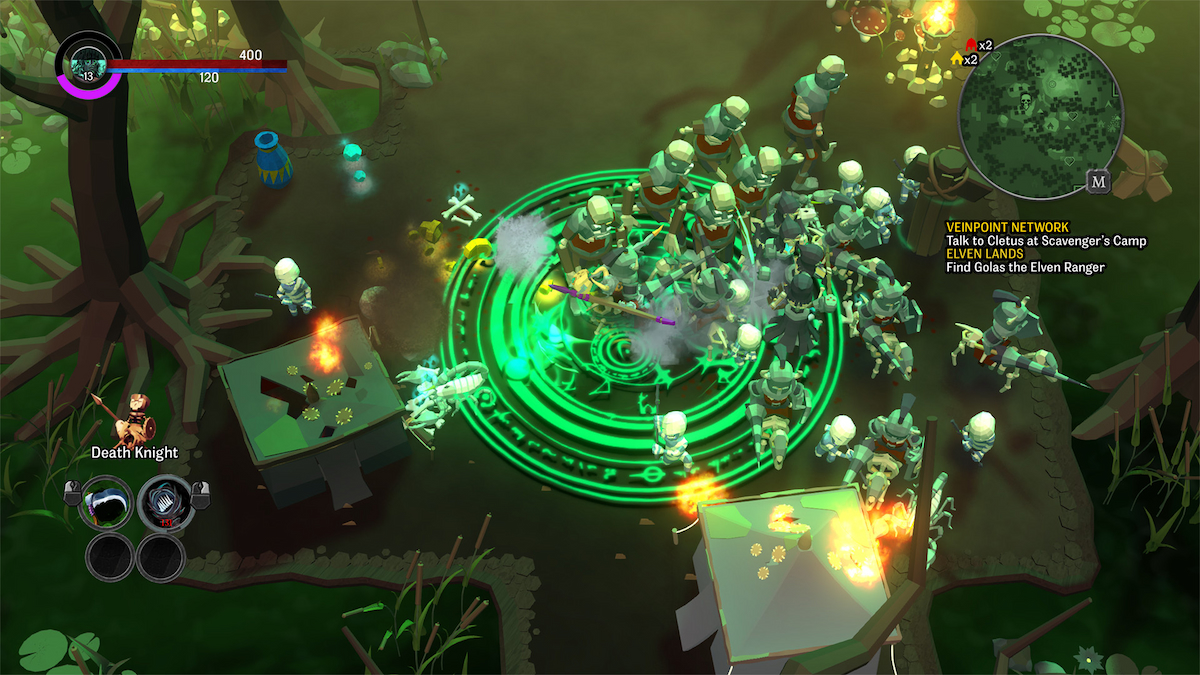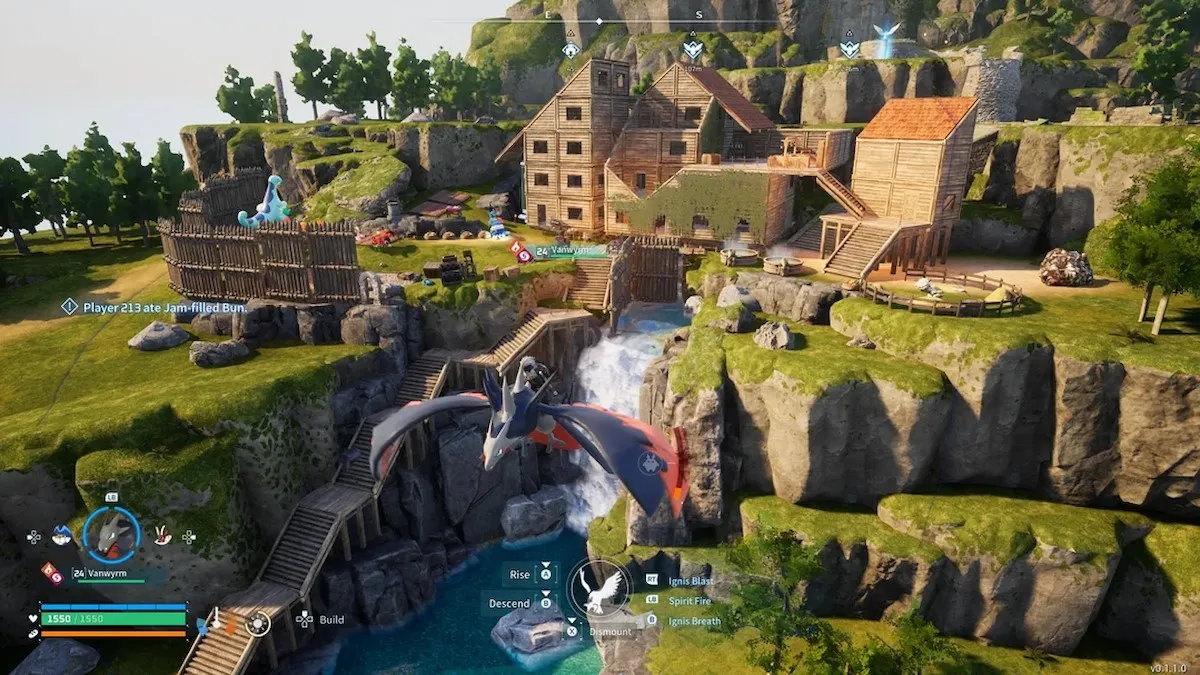When it comes to the first two chapters of Final Fantasy XVI, there’s plenty of material that could get people excited for the rest of the experience.
In addition to providing a solid look at the gameplay that players can expect, these early hours are packed with action, intrigue, and story. The title’s trademark Eikons clash in over-the-top battles with titanic levels of destruction, characters scheme and vie for more political power across nations, and the driving factor in protagonist Clive’s quest for revenge is shown plainly.
And yet, despite all of these elements being front and center, none of them were the parts which drew me into Final Fantasy XVI and had me more excited than ever to dive into the game’s world. Instead, it was a small part of a brief cutscene that most will probably forget about shortly after it happens.
So what could this scene be which outdoes all of these other elements? Simple: It’s a cutscene where a handful of characters prepare to drink and smoke.

As representatives from two allied nations discuss how assistance will be provided in an ongoing battle, a moderator signals a servant to refill their wine. They do so, but instead of bringing over a bottle, they use a crystal which produces new wine via magic. This is immediately followed up by a woman lighting the tobacco in her pipe using her own magic powers, and barely anyone bats an eye at either action.
It’s goofy and even a bit unnecessary. After all, we’re talking about pouring wine and lighting a pipe. Neither are tasks which require the use of ancient primordial energies, and in plenty of other scenarios it would be excessively lazy.
Plus, it’s not even supposed to be the focus of the cinematic playing out. The characters present are talking about what their next move will be in a pivotal battle which could determine the fate of several countries. Their dynamics and true intentions are also hinted at, with two in particular engaging in one of the steamier romantic interactions from any Final Fantasy title to date.
But I couldn’t help but focus in on these small, seemingly pointless parts of the scene, and how a noticeable amount of effort went into making Final Fantasy XVI players focus in on them as they happen. They were meant to be noticed, and to convey the way magic is used in this world. It isn’t just for decimating armies or lighting monsters up with fire, frost, or lightning in the heat of battle; it’s something that can be used for quite literally anything.
It showed a clear care for building up the world around the gameplay, and for establishing the importance of magic in the characters’ lives. More importantly, though, is that it shows the game could address an issue from the last mainline installment in the series.

While Final Fantasy XV was far from a failure, it still bore the telltale signs of a game that was put out too quickly. It was host to plenty of fun ideas and concepts, but more than a few felt like they hadn’t been honed in a way that allowed them to shine as brilliantly as they could have. Though maybe not the biggest issue, the game’s worldbuilding — and specifically how it built up its magic — was among these imperfect aspects.
To be sure, there was clearly some thought put into this aspect of the setting: Though it might not have been a readily present aspect of the world available to all of its characters, a driving factor of the plot was to help Noctis use the magic reserved for his royal lineage to save the world. He could likewise make use of his unique affinity for this force so that others could make use of it through Elemancy, creating small containers packed with the power of Fire, Blizzard, Thunder, and other spells.
Magitek even made its return via the antagonistic Niflheim Empire, with their soldiers, airships, and other military technology all utilizing machinery powered by magic properties and Daemons.
And yet, there was a clear disconnect in how the game made use of magic from scene to scene or moment to moment. Despite its longstanding existence and its clear utility in a variety of situations, it was mainly used in battle through the use of items and for plot-centric purposes. Everywhere else, it felt like an afterthought in the rest of the game’s design. People weren’t using Magitek cars and vehicles on a regular basis, and they couldn’t use harnessed bits of the Caelum family’s power for everyday purposes.
Was this a game-breaking flaw? Not at all. But the fact that this attention to detail wasn’t there kept the game from being all it could be. It kept the game from fully enveloping me in its mythology, and kept me from being drawn into the world the way I otherwise could have.
The fact that the developers of Final Fantasy XVI thought enough about magic’s importance to the world to include the scenes they did — and as early as they did — makes it feel all the more complete as a narrative and an experience. I’ve already got a clear concept of how magic is used in the game’s world, and the role it could play in the world as I explore more locales and delve deeper into the title’s sprawling environments.
Time will tell if this remains true by the end of the game, but for now, I couldn’t be more excited to dig into the rest of the game. Final Fantasy XVI clearly has an exceptional amount of care put into it, and may provide players with a magic-filled world the likes of which they haven’t been able to experience in a good-long while.













Updated: Jun 21, 2023 09:05 am